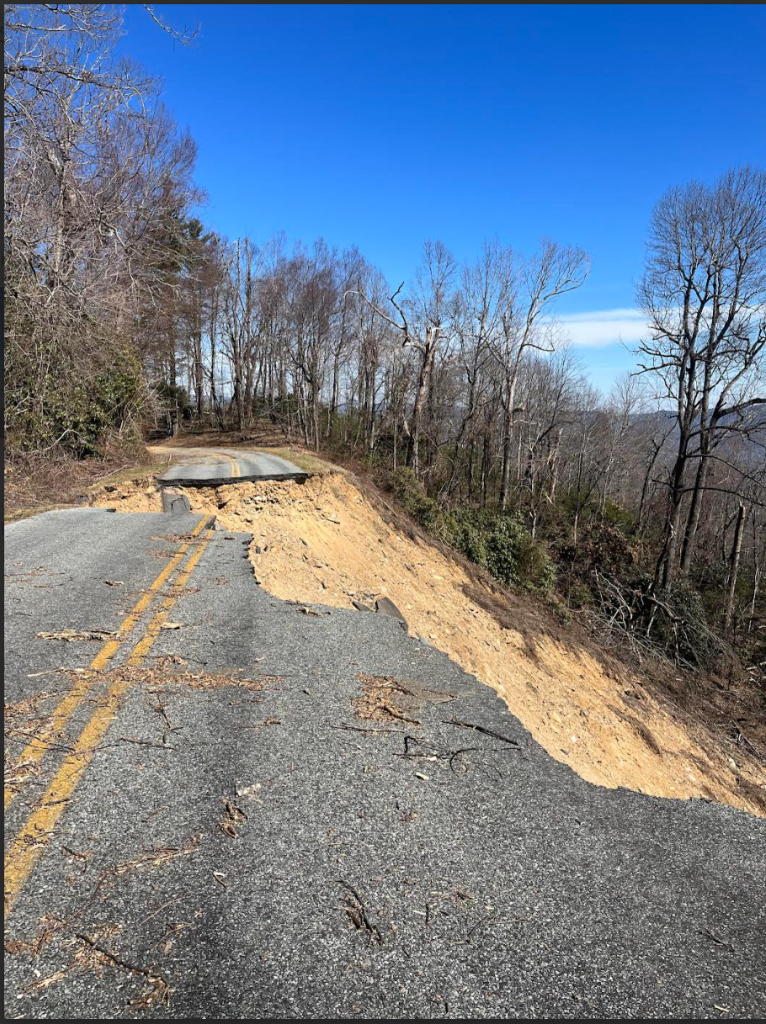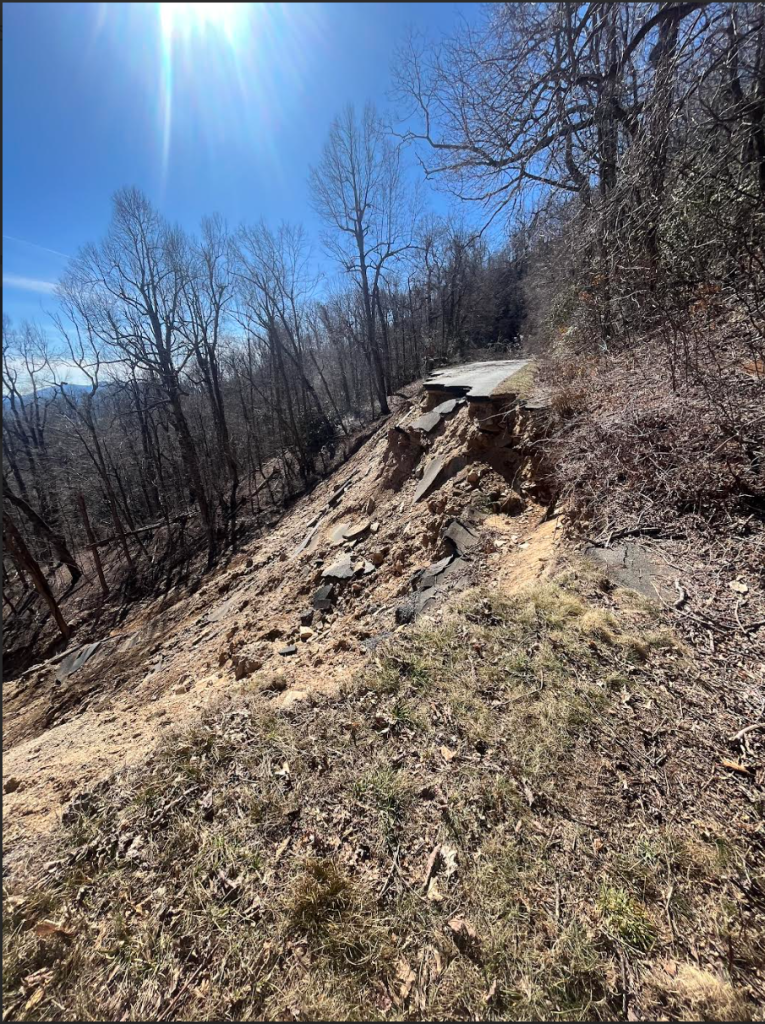In late February of this year, I took a weekend trip out to Western North Carolina to go do some hiking. The place I was staying was in the town of Burnsville, about an hour north of Asheville. On the drive in, the effects of Hurricane Helene were everywhere. I had seen pictures and heard stories about the damage, but nothing I had heard or seen prepared me to witness it first hand. Many of the places we drove by looked abandoned, and the remains of people’s lives were scattered everywhere.
I needed to stop at a gas station, so I navigated to the nearest one. Upon getting there, I realized there was no gas. The shop was empty, the pumps were broken, and there was about three feet of water damage on the building next door that had clearly been looted awhile ago. My immediate reaction was surprise, followed by a deep sense of sadness. Sadness for the people who were here when the floods came, sadness for the people who worked at the gas station, and sadness for the people who found themselves needing what was in that abandoned gas station.
This was not the first time I felt sadness on that trip. The next day, we drove to a trailhead off of the Blue Ridge Parkway. On the way there, there were many more abandoned buildings; this time, however, they were houses. People’s homes had been completely abandoned and destroyed. There were damaged cars along the riverbeds that had been swept far away from any road. There were homes with their roof falling in from fallen trees, and there was a dark ring of water damage around the bottom of nearly every home that was still standing. The most shocking to me, however, were the remnants of a home near the river. As we drove, there were pieces of siding, roofing, and even furniture lodged into the piles of fallen trees that had been washed up by the flooding. As we drove, we followed a trail. A trail containing the remains of someone’s life. At the end of it was the foundation to a house. All that was left was concrete and brick embedded in the ground, and everything else was gone.
We kept driving. We did not reach the trailhead because it was soon that the we encountered a “Road Closed” sign on the Blue Ridge Parkway. It was close enough to the trailhead, however, that we decided to park next to the road, get out, and hike the Parkway. It was not far into the hike that it became evident why the road was closed. It was closed because the road was gone, washed away by the earth. Although there was no pavement, there was a footpath that had been made next to where the gap was. So, we kept going. It felt as if I was transported into a dystopian sci-fi world in which the roads were empty and there was not another soul in sight.
That trip was a very strange but eye-opening experience for me. Hearing about the damage from the hurricane and seeing it were two very different things. Thinking back to that hike, one of the things that stuck out to me was the small path that was carved out next to where the road fell away. It made me wonder who else had been here, seen the road was gone, and kept going. This evidence of persistence gave me hope. Even when the road appeared to have ended, people had found a way to keep going. The recovery for Western North Carolina is going to take a lot of time and money, and I know seeing and thinking about the loss it has caused was quite devastating. However, I have hope that people will find a path to keep going.
Sending food, water, and toiletries is a big help for those who were affected by the hurricane. I will also be taking more trips out to the mountains to help contribute to the economy in the area. A lot of shops were closed from the lack of business, and a lot of Airbnb’s have been struggling to stay booked. It’s important for people to share their experiences as much as possible and keep raising awareness for the western half of our state.
Here are a few pictures of the road I took:

